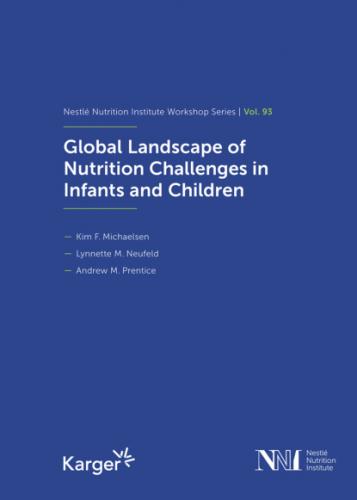Fig. 1. Coexistence of childhood stunting and anemia and overweight in adult women, 2017, reproduced from [7].
Other nutrients with evidence of high deficiency prevalence in children in low- and middle-income countries include iron, zinc, and iodine [20]. While data are scarce, vitamin D deficiency is likely also high among children in several countries [21]. There is also evidence that intake of essential micronutrients, specifically vitamins A, D, E and calcium, is insufficient among many children in high-income countries [22]. There is an urgent need for greater investment in the collection and use of high-quality survey data to quantify the magnitude and distribution of micronutrient malnutrition and ensure that programmatic responses are appropriately targeted.
There is growing evidence that many countries are affected by both undernutrition (stunting, wasting, micronutrient malnutrition) and overweight/obesity, often referred to as the double burden of malnutrition. For example, the 2018 Global Nutrition Report [7] mapped the coexistence of stunting in children <5 years of age and anemia and overweight in adult women (Fig. 1). This pattern has important policy implications as countries must deal with undernutrition simultaneously with overweight, obesity, and related noncommunicable diseases. Such national-level data, however, provide no indication whether the issues are concentrated in the same subsets of the population (e.g., geographical regions, urban vs. rural areas), the same households (e.g., overweight mother and undernourished child), or whether the same individuals are affected by >1 forms of malnutrition (e.g., stunted, overweight, micronutrient-deficient child). Much survey data exist that, if analyzed, would allow for more comprehensive estimates of the co-existence of nutritional issues in population subgroups, households, and individuals to inform policy and programs. There is also a need for more comparable approaches to quantifying and studying the determinants of the double burden of malnutrition among countries to permit global tracking [23].
Progress Toward Addressing Malnutrition: Some Examples from the Literature
Several countries have made substantial progress addressing malnutrition in children. In Nepal, for example, stunting declined from 57.1% (2000) to 36.0% (2017), and in Lesotho from 52.7 to 33.4% over the same period [24]. In Brazil, stunting declined from 19% in 1990 to 7% by 2006 [2]. Several of the likely determinants to progress in Brazil include significant increase in exclusive breastfeeding prevalence (2% in the 1980 to 39% in 2006), and important reductions in open defecation (17% in 1990 to 2% in 2011) and in extreme poverty, with the proportion of the population living on <2 USD per day dropping from 21 to 5% over the same period [2]. Despite these promising cases, many countries are not on track to reach global targets of stunting and wasting reduction and no increase in overweight [7]. Unfortunately, well over 100 countries have no data to adequately track such targets [7].
Even where data exist, tracking national progress often masks substantial disparity of malnutrition in children within countries. A recent publication from India illustrates this issue dramatically. Using stunting prevalence data by district from a 2015 to 2016 survey, the authors illustrate the dramatic variation in stunting prevalence across India (Fig. 2) [25]. The variation between districts with the highest (>40%) and lowest (<20%) rates of stunting was explained by several maternal factors (low BMI, marriage <18 years of age, antenatal care), adequacy of the child diet, several demographic and economic factors (10+ years of schooling, household size, and assets), while 29% of the variation remained unexplained. This has important implications for policy and programmatic responses that must consider the severity of the issues and the diversity across regions of the underlying determinants.
While many countries lack data to assess variability of prevalence disaggregated to this level, several factors that strongly predict disparity in the prevalence of malnutrition are well documented. For example, globally and in all regions, children living in the poorest households are at least twice as likely to be stunted than the richest [9]. In Latin America and the Caribbean, the prevalence of stunting among poor families (30%) is 4.3 times higher than that among the richest (7%). Similar analyses to explore the prevalence of overweight in children among diverse population subgroups within countries have not yet been compiled at global level. Several publications suggest, however, that overweight among children, while once concentrated among the non-poor, may no longer track economic boundaries as stunting does (see for example [26]).
Fig. 2. Diversity in the prevalence of childhood stunting by district in India, using data from 2015 to 2016, reproduced from [25]. NFHS, National Family Health Survey.
Understanding the Etiology of Malnutrition
The determinants of undernutrition are well documented and have been recently updated to incorporate all forms of malnutrition [2]. Immediate causes include health-related behaviors (e.g., diet, activity, hygiene) and biological factors (e.g., disease state, genetics). Underlying these are several household- and community-level factors that facilitate or limit a household’s ability to provide health, care, and a quality diet, such as access to food and health care, social norms related to care and feeding, and the living environment (e.g., built spaces and water and sanitation services). These factors are in turn affected by income and inequality, trade, urbanization, existence of social protection and health systems, and agricultural development, among other factors. Finally, the extent to which such factors may favor nutrition depends on an enabling environment of political commitment, effective governance, and capacity. As illustrated above in the case of
